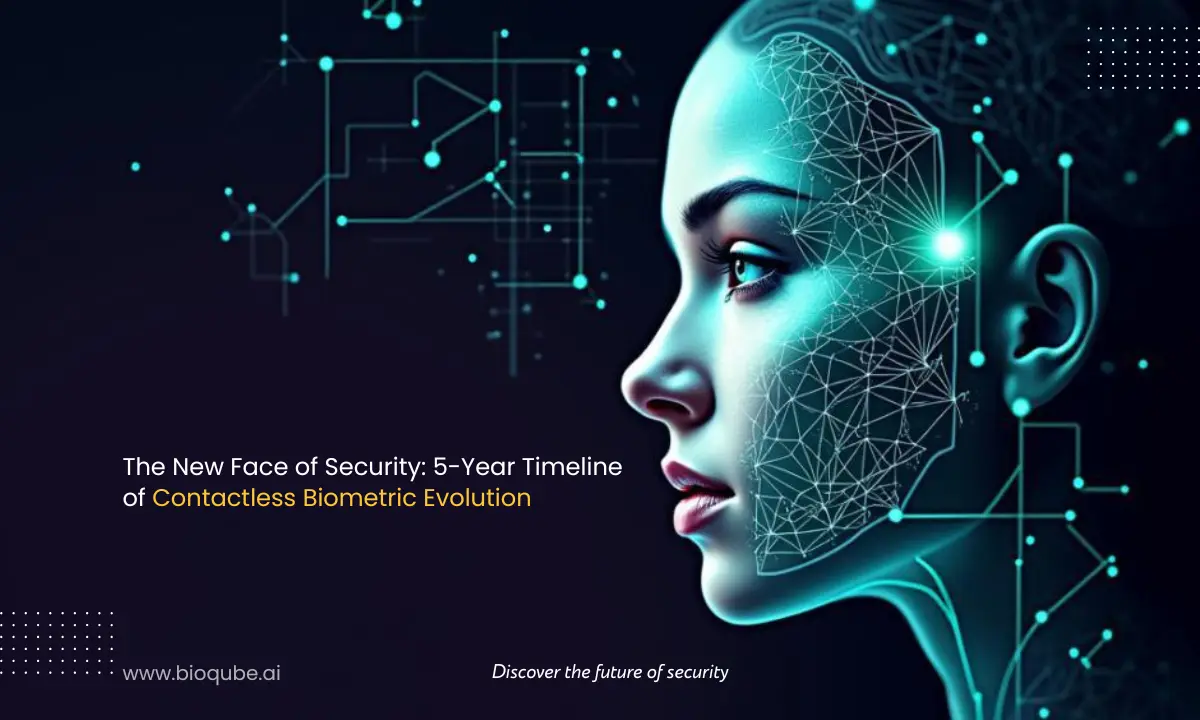
Tracing the Biometric Evolution and Touchless Security Shift Post-Pandemic | BioQube Inc.
Introduction: A Pandemic That Redefined Identity
The COVID-19 pandemic disrupted global systems in ways no one could have anticipated—particularly in how people interact, verify, and secure identities. Almost overnight, biometric systems that required physical contact became obsolete and unsafe. This global health emergency didn’t just accelerate digitization; it catalyzed a fundamental shift in identity verification.
From 2020 through 2025, we’ve witnessed a powerful biometric evolution—a journey from reactive health responses to proactive, intelligent, and touchless security systems that are now the cornerstone of digital identity frameworks across governments and industries.
2020: Hygiene Replaces Convenience
At the start of the pandemic, traditional biometric systems such as fingerprint scanners and physical ID checks raised concerns over surface transmission. Security systems that once provided convenience became hygiene hazards. Organizations in critical sectors—aviation, healthcare, and government—faced an immediate challenge: ensure safety without compromising security.
This urgency triggered the first wave of innovation. Facial and iris recognition technologies emerged as safer alternatives, while mobile-based contactless attendance and temperature-screening kiosks gained traction. What began as a short-term solution laid the groundwork for long-term transformation.
2021–2022: The Shift Becomes Strategic
By 2021, touchless biometrics were no longer optional—they became essential. The adoption curve steepened as AI-enabled systems integrated real-time analytics, enabling not just identity verification but also health and behavior monitoring. Face recognition tools adapted to masked faces. Liveness detection ensured authenticity. Voice recognition became part of contactless banking transactions.
Governments introduced digital vaccine passports linked with biometric data, and enterprises implemented frictionless access management for staff and visitors. Meanwhile, the education sector began using facial and behavioral biometrics for remote examination integrity. The ecosystem was evolving—driven not only by health requirements, but also by expectations of convenience, compliance, and trust.
2023–2024: Rise of Contactless, Multifactor Biometrics
As demand grew, biometric systems evolved into robust, multifactor platforms. Modern identity verification no longer relies on a single modality. Instead, solutions began combining facial, iris, voice, palm, and even behavioral biometrics—such as gait analysis, touchscreen pressure, and typing patterns.
These innovations were deployed seamlessly across smartphones, tablets, kiosks, CCTV systems, and border control infrastructure. AI algorithms matured, offering faster, more accurate recognition across diverse populations and lighting conditions. The convergence of multimodal inputs, decentralized data storage, and real-time analytics empowered industries to achieve both compliance and agility.
For sectors like finance, border security, and urban governance, this evolution wasn’t just a tech upgrade—it became a strategic enabler of digital transformation.
2025: A New Era of Trust—Hygienic, Frictionless, and Intelligent
By 2025, touchless biometrics have become the global standard. Identity verification is no longer a physical checkpoint; it’s an embedded layer of trust—present across every interaction, often passively authenticated without any disruption to the user’s experience.
Governments now issue biometric-based e-passports and national IDs. Immigration and border control leverage fully contactless visa and identity systems, backed by AI and blockchain-powered decentralization. Healthcare providers deploy behavioral and facial biometrics for patient authentication and fraud reduction. Enterprises have adopted biometrics not only for access management but also for secure transactions and employee well-being.
In smart cities, behavioral biometric surveillance is being used for real-time threat detection and crowd management—prioritizing both security and civil liberty through ethical AI governance.
This widespread adoption is reinforced by numbers: the contactless biometrics market is projected to grow from $19.7 billion in 2022 to $39.8 billion by 2027, at a CAGR of 15.1% (MarketsandMarkets™). The momentum is clear—what began as a reactive safety measure has evolved into an indispensable digital identity framework.
The Biometric Evolution: More Than Just Technology
This five-year timeline illustrates more than a shift in systems—it represents a global redefinition of identity, safety, and trust. From physical fingerprints to AI-powered, multifactor contactless authentication, biometrics have transitioned from high-tech add-ons to mission-critical enablers.
What makes today’s biometric systems truly transformational is their context-awareness. By blending identity with behavior, location, and health parameters, they provide a 360° view of trust—secure, seamless, and adaptable.
Final Thoughts: Designing for a Touchless Tomorrow
The journey from COVID to 2025 has proved one thing: the future of identity is touchless, intelligent, and human-centric. As biometric technologies continue to advance, industries must embrace this evolution not only as a security imperative but as a pathway to better digital experiences.
Organizations that adopt multifactor, multimodal biometric systems today are not just safeguarding operations—they’re investing in a frictionless, privacy-conscious, and resilient future.
Ready to Transform Your Identity Infrastructure?
Explore our AI-powered, decentralized, and multifactor contactless biometric solutions tailored for sectors like government, healthcare, aviation, and enterprise.